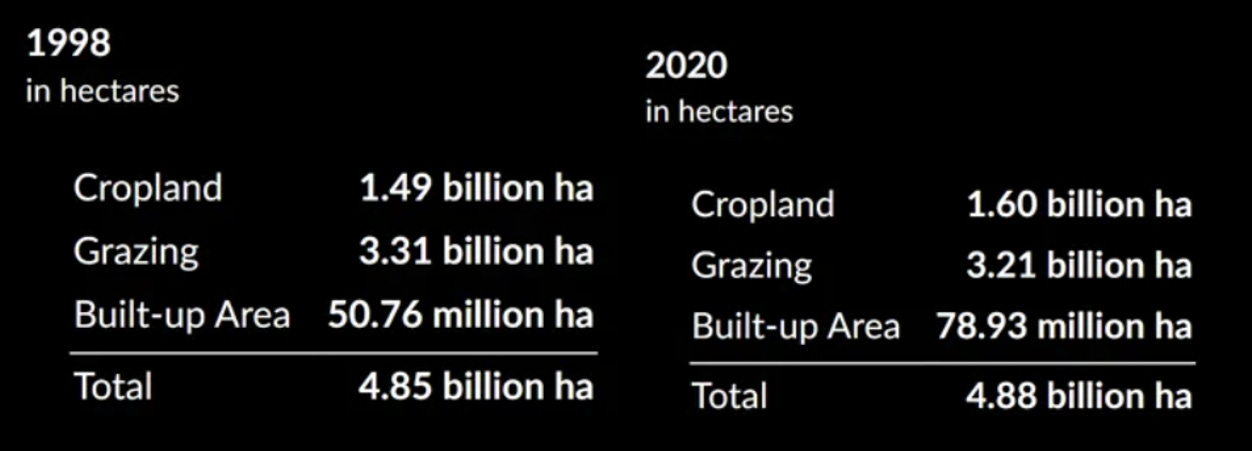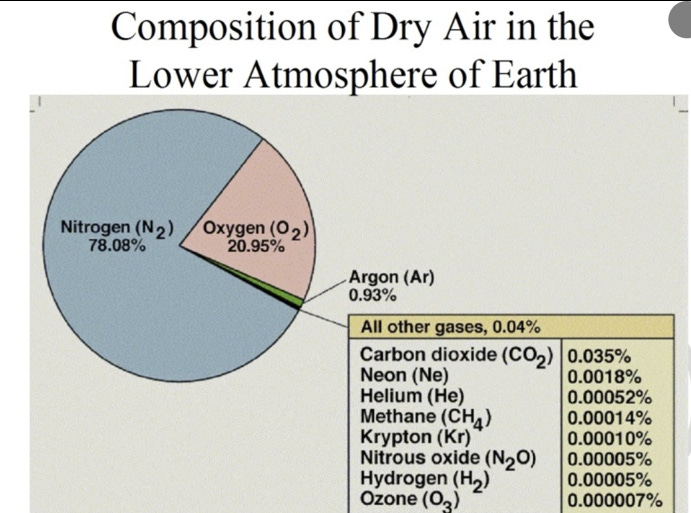Global warming is occurring in cities with burgeoning populations, not in the countryside – explaining the “urban heat island” effect - the UN Intergovernmental Panel on Climate Change use flawed data
A few weeks ago, I posted this piece:
It had these numbers on the split between urban and rural land use by mankind veer the last 40 years:
Plant surface area of land area = 57.5 million square miles = around 14.9 billion hectares.
“Hardly any change at all in overall land use of one third of Planet Earth by humans, but a 50% increase in the square miles of built-up areas (where the urban heat island effect takes place) to 59 million (not billion) hectares which equates to 120,000 square miles if “urbanisation” over the last 40 years.
That’s an expansion from 0.34% of the total surface area of the Earth in 1980, to 0.53% - an increase of around 0.2%,”
Here’s a representation of the make-up of the gases in the atmosphere:
Carbo dioxide is now held to be at around -.042% from the 0.035% shown in the “other gases” table on the right-hand side. All that fuss about methane emissions relates to the increase from 0.00014% of the air to 0.00018% - and increase of 40 parts per billion to 180 parts per billion. (Insert “face of concern” here :>| ).
The team at www.ceres-science.com have put out a short ten-minute video on what urban heat islands are.
The urban heat island: implications for global warming & climate change (youtube.com)
In the video, the narrator explains how the UN IPCC claims that just 10% of measured “global warming” comes from urbanization and the urban heat island effect. The tam at Ceres estimate that this impact is four times larger at 40% of any warming effect and that the Sun is far more important for Planet Earth’s changes in temperature and climate. (Temperature is short term – a few days/weeks/months, climate change is measured over periods of at least three decades).
As an aside, here’s a link to another article from October 2023
And another from December 2023:
The Ceres team points out that the management of city heat is of paramount importance. This can be doe by planting trees along city streets, installing roof top gardens and solar reflectors (solar panels generate a lot of heat!), lots more parks and surfaces that allow water to permeate rather than gather as puddles and evaporate.
I wonder how much of the urban heat island effect can be attributed to the mass migration to cities over the last several decades within India and China – maybe the movement of several hundred million people – compared to the mass migration of tens of millions to US and European cities from outside the US and Europe..
What is not needed is architecture like this:
This London skyscraper can melt cars and set buildings on fire (nbcnews.com)
“London isn't famous for hot weather, but that may change soon, and not because of global warming: The design of a new skyscraper in the city is melting cars and setting buildings on fire.”
Sems like there should be demand for an urban, climate friendly urban renewal project that creates wind tunnels for turbines and replaces existing climate hostile skyscrapers with climate friendly ones.
Onwards!!!
Please take a paid subscription or forward this article to those you think might be interested. You can also donate via Ko-fi – any amount from three dollars upwards. Ko-fi donations here: https://ko-fi.com/peterhalligan





I always liked those Danish or ancient Nordic homes with the soil and vegetation roofs. The plants and moisture keep it cool in summer.
Just like the elections, all rigged.